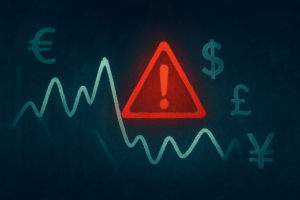Introduction
The US Dollar Index (DXY), a key measure of the strength of the US dollar against a basket of major currencies, witnessed a significant uptrend in the second week of June 2025. This upward movement came in direct response to hawkish rhetoric from senior officials at the Federal Reserve. Their commentary, aimed at managing inflation expectations and preparing markets for the possibility of future interest rate increases, prompted renewed demand for the greenback across global currency markets. As traders and investors digested the implications of these signals, the US dollar gained ground against the euro, yen, and other major counterparts. This article examines the context, market reaction, and broader economic implications of the recent movement in the US Dollar Index.
Federal Reserve’s Hawkish Tone Reignites Dollar Demand
At the heart of the dollar’s recent strength lies a series of remarks by Federal Reserve policymakers who emphasized their commitment to controlling inflation. Despite some signs of easing price pressures in consumer spending and commodity prices, inflation remains above the Fed’s target of two percent. Several Fed governors and regional bank presidents reiterated that further tightening may be necessary if inflation remains persistent, even as they keep a close watch on the labor market and other economic indicators. The suggestion that the door remains open for one or two more rate hikes in the coming months was interpreted by forex markets as a clear hawkish signal, reinforcing the appeal of the US dollar as a high-yielding and stable currency.
Understanding The Dollar Index And Its Importance
The US Dollar Index serves as a vital indicator of the relative value of the US dollar against a basket of six major global currencies, including the euro, Japanese yen, British pound, Canadian dollar, Swedish krona, and Swiss franc. A rising index typically reflects increased confidence in the US economy and expectations of higher interest rates, both of which tend to attract capital inflows. In recent sessions, the DXY hovered near the 105 level, up from earlier lows in the 103 range seen in May. This appreciation underscores investor belief that the US economy remains resilient and that monetary policy will remain tighter for longer than previously anticipated.
Inflation Concerns Continue To Drive Policy Decisions
One of the central themes shaping monetary policy in 2025 remains the challenge of inflation. Despite aggressive rate hikes throughout 2022 and 2023, core inflation has proven stubborn. Recent data showed an unexpected uptick in core personal consumption expenditures, suggesting that inflationary forces are not yet fully under control. The housing sector, wage growth, and supply chain constraints continue to contribute to upward price pressure. As a result, Fed officials are hesitant to declare victory and instead remain vigilant, maintaining a bias toward further tightening if necessary. This posture directly impacts the forex markets, where higher US yields support a stronger dollar.
Market Reaction To Fed Commentary
Currency markets quickly responded to the Fed’s hawkish stance. The US dollar rallied across major pairs, particularly against the euro and Japanese yen. The EUR/USD pair slipped below the 1.07 level, while USD/JPY surged past 157, reflecting widening yield differentials. Currency traders interpreted the Fed’s message as a clear indication that monetary easing is not on the table for the immediate future. Equity markets, on the other hand, displayed some caution, with volatility increasing as investors reassessed their rate expectations. Bond yields also ticked higher, further supporting the dollar.
Technical Factors Reinforce Bullish Dollar Sentiment
From a technical perspective, the US Dollar Index has found support near the 103 level and is now testing resistance around 105. Analysts suggest that a clean break above this level could open the door to further gains, possibly targeting 106.50 or higher in the coming weeks. Momentum indicators such as the Relative Strength Index (RSI) and Moving Average Convergence Divergence (MACD) also point to continued upward momentum. Additionally, the ongoing strength of the US economy, particularly in employment and services sectors, adds to the bullish narrative for the greenback.
Impact On Emerging Markets And Global Trade
The strengthening dollar has notable consequences for emerging markets and global trade dynamics. A strong dollar tends to increase debt servicing costs for countries with dollar-denominated debt, particularly in Latin America, Africa, and Southeast Asia. Moreover, it exerts downward pressure on commodity prices and can lead to tighter financial conditions globally. Several emerging market central banks have responded by maintaining or raising interest rates to defend their currencies, leading to a complex web of monetary policy divergence that continues to shape capital flows.
Central Bank Divergence And Its Currency Implications
Another important driver of the Dollar Index’s rise is the widening gap between the Fed and other major central banks. While the European Central Bank (ECB) has hinted at a pause in its rate hike cycle amid slowing growth in the eurozone, the Bank of Japan remains committed to ultra-loose policy, resisting pressure to normalize despite rising inflation. This divergence amplifies the attractiveness of the US dollar in the eyes of investors seeking yield. The Bank of England and Reserve Bank of Australia, though more hawkish, have not matched the Fed’s aggressive stance, further contributing to the dollar’s relative strength.
Investor Sentiment And Safe-Haven Flows
In periods of market uncertainty, the US dollar often benefits from safe-haven flows. Geopolitical tensions, including unresolved trade frictions, conflicts in Eastern Europe, and instability in the Middle East, have kept risk appetite subdued. In this environment, investors tend to rotate into safe assets such as US Treasuries and the dollar. Recent volatility in equity and commodity markets, coupled with persistent inflation concerns, has reinforced this trend. As a result, demand for the US dollar has remained strong, even in the face of mixed economic signals globally.
Short-Term Outlook For The US Dollar Index
Looking ahead, the short-term trajectory of the Dollar Index will depend heavily on economic data releases, especially inflation metrics and employment numbers. Traders will also monitor statements from Fed officials, who are likely to maintain a cautious tone until they see clear and sustained progress on inflation. Market expectations currently price in a 50 percent probability of at least one more rate hike by September 2025. Any surprises in upcoming data or a shift in geopolitical developments could lead to further volatility and influence the dollar’s direction.
Conclusion
The US Dollar Index’s recent climb underscores the market’s sensitivity to central bank signaling. The Federal Reserve’s hawkish posture has re-energized the dollar, driven by a combination of policy expectations, resilient economic indicators, and global risk dynamics. For forex traders, the DXY remains a crucial barometer of sentiment and a key input in technical and macroeconomic analysis. As long as inflation remains elevated and the Fed keeps its foot on the tightening pedal, the dollar is likely to maintain its strength relative to global peers.



